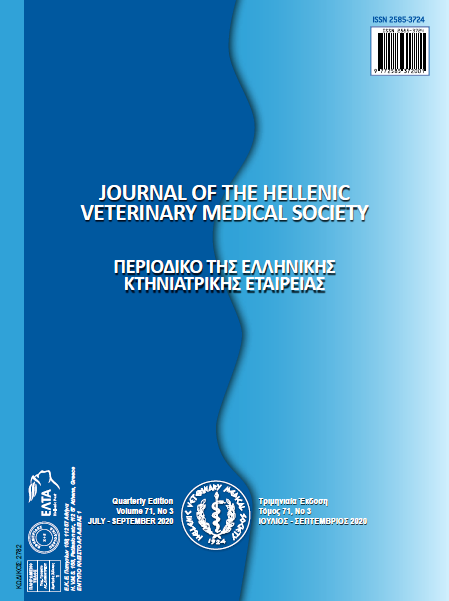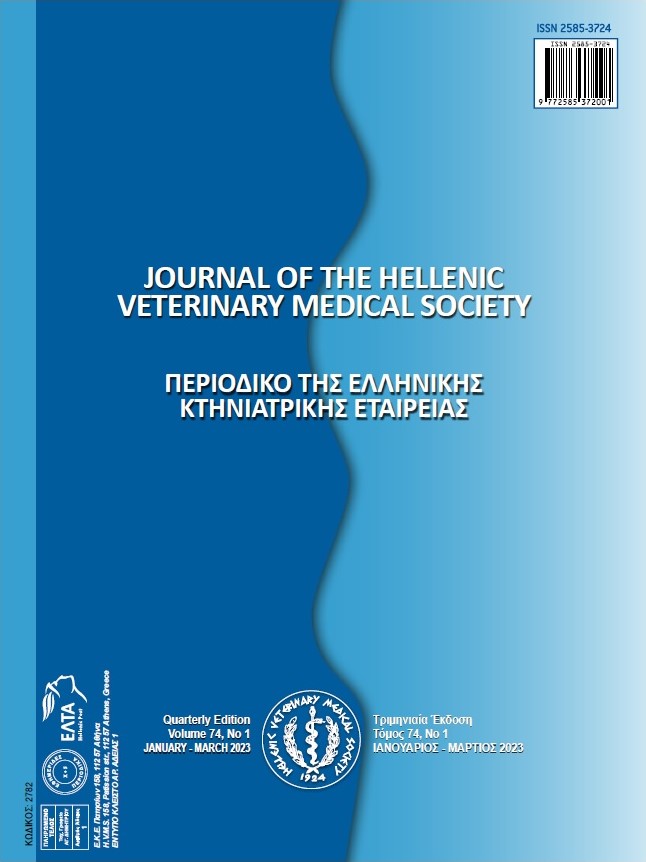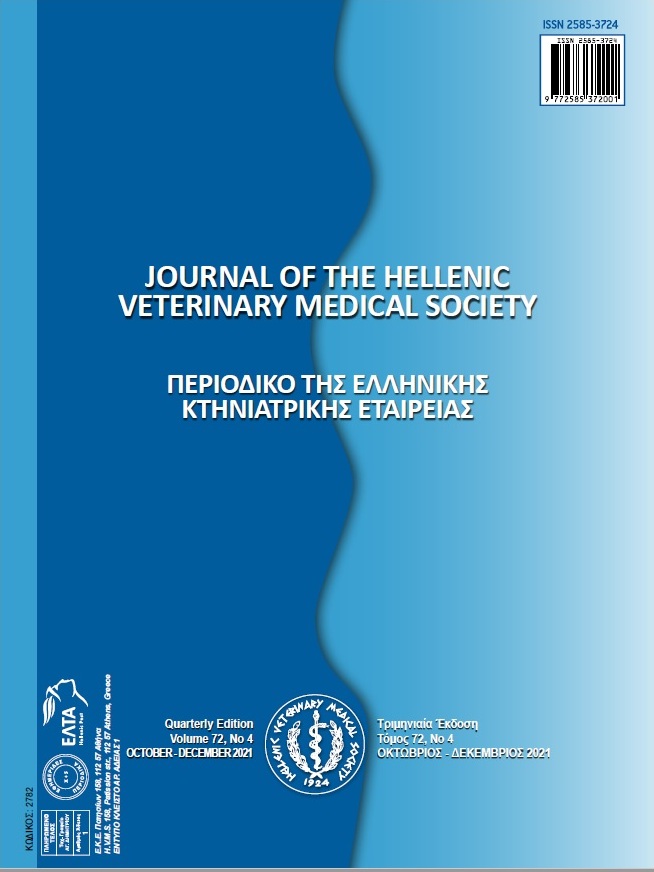Humeral osteochondrosis in dogs: Long-term outcomes of 10 clinical cases

Περίληψη
Humeral osteochondrosis (HO) is a complex growth cartilage disorder characterized by disruption in the process of endochondral ossification. This disorder, often seen in dogs, involves the separation of a segment of articular cartilage from the underlying bone, leading to degenerative joint disease and lameness. This retrospective study aims to compare the outcomes of conservative and surgical treatment of HO in ten instances. The study was conducted at the Surgery and Obstetrics Unit of the Companion Animal Clinic, Department of Veterinary Medicine, Aristotle University of Thessaloniki, Greece. Nine client-owned dogs of varying breeds, both sexes, aged 4–8 months, and weighing 10–35 kg participated in the study. The duration of lameness prior to their first consultation ranged from 1 to 3 months. All participants were thoroughly examined clinically, orthopedically and radiographically. This helped in determining both the location of osteochondrosis, whether in the shoulder or elbow joint, and the degree of severity. One dog, diagnosed with bilateral HO, accounted for two of the ten cases. Nine cases exhibited lesions on the caudal aspect of the humeral head, whereas one showed them in the medial part of trochlea humeri. Six cases underwent surgical treatment, which included the removal of the cartilage flap, curettage, and drilling of the subchondral bed. The remaining four cases received conservative treatment such as activity restriction, weight reduction and administration of non-steroidal anti-inflammatory drugs. Progress was evaluated through a dog mobility questionnaire completed by the owners. Findings showed that 1-month post-operation, surgically treated dogs, except for two, returned to full activity. The two exceptions experienced low-grade lameness post-strenuous exercise. Dogs receiving conservative treatment were not restricted, and their response to medical therapy varied, showing degrees of lameness, especially when conditions were favorable for the manifestation of osteoarthritis. The results obtained suggest that dogs treated surgically demonstrated better long-term functional outcomes compared to those treated conservatively. Recurrent lameness in some of them appears to be due to the development of degenerative changes in the joint.
Λεπτομέρειες άρθρου
- Πώς να δημιουργήσετε Αναφορές
-
Krystalli, A., Papaefthymiou, S., Bairamis, T., Patsikas, M., & Prassinos, N. (2025). Humeral osteochondrosis in dogs: Long-term outcomes of 10 clinical cases. Περιοδικό της Ελληνικής Κτηνιατρικής Εταιρείας, 76(2), 9391–9402. https://doi.org/10.12681/jhvms.37461
- Τεύχος
- Τόμ. 76 Αρ. 2 (2025)
- Ενότητα
- Case Report

Αυτή η εργασία είναι αδειοδοτημένη υπό το CC Αναφορά Δημιουργού – Μη Εμπορική Χρήση 4.0.
Οι συγγραφείς των άρθρων που δημοσιεύονται στο περιοδικό διατηρούν τα δικαιώματα πνευματικής ιδιοκτησίας επί των άρθρων τους, δίνοντας στο περιοδικό το δικαίωμα της πρώτης δημοσίευσης.
Άρθρα που δημοσιεύονται στο περιοδικό διατίθενται με άδεια Creative Commons 4.0 Non Commercial και σύμφωνα με την άδεια μπορούν να χρησιμοποιούνται ελεύθερα, με αναφορά στο/στη συγγραφέα και στην πρώτη δημοσίευση για μη κερδοσκοπικούς σκοπούς.
Οι συγγραφείς μπορούν να καταθέσουν το άρθρο σε ιδρυματικό ή άλλο αποθετήριο ή/και να το δημοσιεύσουν σε άλλη έκδοση, με υποχρεωτική την αναφορά πρώτης δημοσίευσης στο J Hellenic Vet Med Soc
Οι συγγραφείς ενθαρρύνονται να καταθέσουν σε αποθετήριο ή να δημοσιεύσουν την εργασία τους στο διαδίκτυο πριν ή κατά τη διαδικασία υποβολής και αξιολόγησής της.





